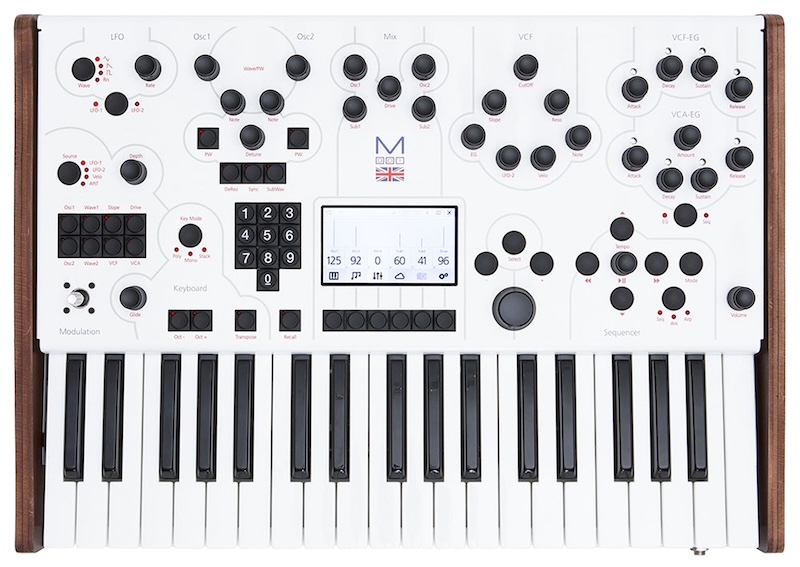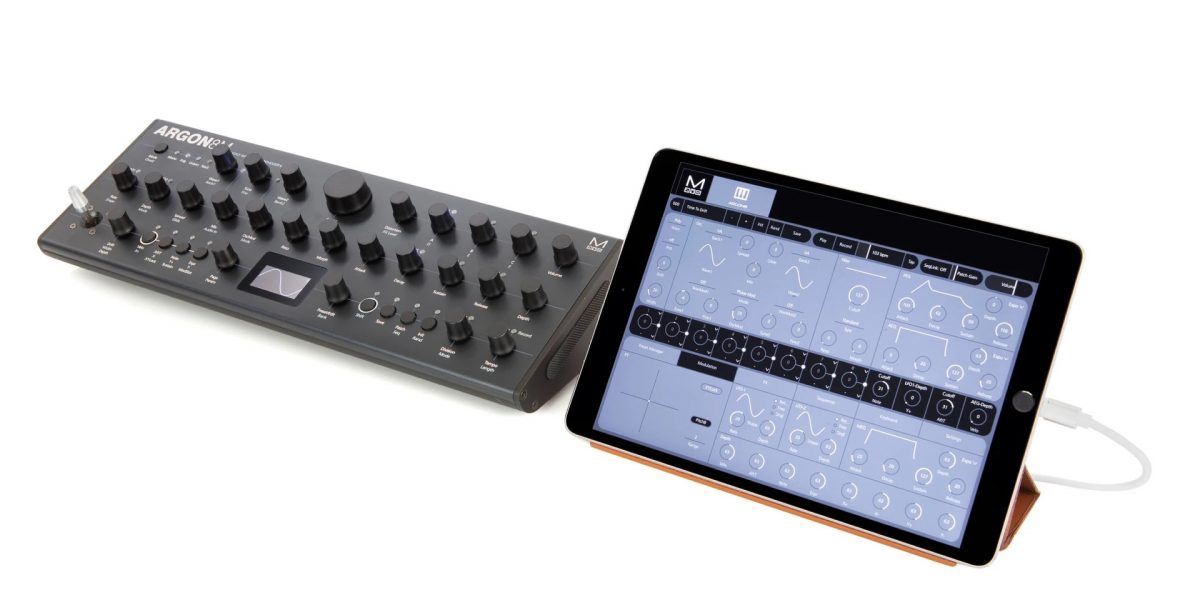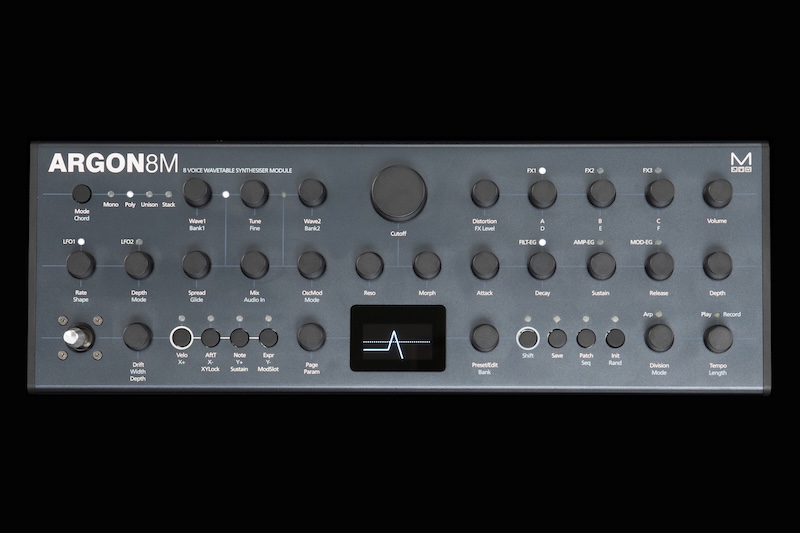One of the best and worst things about revisiting history is rediscovering where things went so wrong. Around a year ago, while reviewing Roland’s JD-08, I made this off-hand comment: “I hate that too many of the electronic instruments out there cater to more atonal or textural Eurorack-inspired musicians.”
Before I open up your hate mail, know that I said this phrase with kindness in my heart. I honestly feel we need more synthesizers like Roland’s JD-08—and the synth I’m focusing on today, Modal’s ARGON8M. Because you see, the ongoing existence of something like Modal’s ARGON8M is a fitting testament that, beyond the history of its creator, lies the pulse of a certain tonal or musical aesthetic choice that needs to be nurtured.
The Return of Modal Electronics: A New Chapter After Insolvency
But before we get there, let’s address the elephant in the room. I bring you news of just what Modal’s situation is today. As of the time of this writing, Modal has returned from a certain period of insolvency by forming a partnership with Hong Kong-based investment company, Alltronics Holding Ltd. Now lean and (hopefully, if you believe the internet) less mean, Modal’s restructuring promises to fulfill the potential always heralded in their line of instruments.
Now, let’s rewind to a time when Bristol, England, wasn’t just a hotbed of trip-hop, but also quietly brewing a revolution in synth design. The year was 2013. Enter Paula Maddox and Philip Taysom, two names that—if you were paying attention to niche synth forums back then—signaled something new was up. Together, they formed Modulus Music (soon to be renamed Modal Electronics), with the lofty goal of redefining what a high-end hybrid synthesizer could be. Maddox, already respected for her work on the Monowave, took the helm as the technical brains behind the operation.

Fast-forward to 2014 and the release of the Modal 002—a 12-voice monster that combined digital oscillators with a transistor-ladder filter that made analog purists do a double-take. But, as tends to happen when your flagship synth is more Rolls-Royce than daily driver, the team at Modal knew they had to make something leaner, more affordable, and—most importantly—something that could sit on more desks than stages. That spark of an idea became the 001, a synth that Maddox herself designed to squeeze two discrete voices from the 002 into a duophonic powerhouse with a compact 37-key keyboard and a ton of attitude.
Of course, no synth story is ever a solo act. Behind the curtain, Maddox was supported by a tight-knit Bristol team of engineers and collaborators, including analog guru George Hearn (who now runs UDO Audio), whose filter know-how subtly flavored the 001’s analog circuits. And while Modal’s filter-morphing tech got most of the headlines, it was the blend of tactile design—OLED screen and all—and that unapologetic duophonic setup that gave the 001 its early cult-like following.
But, as you might suspect, the story of the 001 also hints at where the cracks would eventually show. By 2017, Maddox had left the company, and with her exit, production of the 001, along with the 002 and the analog 008, quietly faded into synth lore. Still, the 001 remains a testament to that brief but brilliant period when Modal was less about investors and more about engineers chasing a very specific, very musical kind of analog-digital hybrid dream.
From Boutique to Accessible: How Modal Shifted Gears
Which brings us, inevitably, to what followed. Because history doesn’t stop when the original team walks out the door—it just takes on new contours. After Maddox’s departure, Modal’s focus shifted. Under new ownership and a more globally minded strategy, the company pivoted away from the ambitious, boutique builds of the 001 and 002 toward more “accessible” instruments like the ARGON series. The Argon8M, in particular, took some DNA from those early Modal synths — think high-resolution digital oscillators and a commitment to lush, evolving wavetables — but repackaged it in a form that was less about bravado and more about instant gratification.
The brushed steel and OLED frills of the 001 were re-imagined in a more compact space. Gone were the PPG-inspired controls. In their place? A sleeker, more user-forward design, sure—but also a synth that didn’t require you to take out a monstrous loan to afford it. And yet, if you squint—or better yet, play one—you’ll catch the ghost of the 00-series in the ARGON8M’s shimmering pads and morphable textures. Proof, perhaps, that while the team changed and the business pivoted, the musical thread Maddox and her Bristol crew spun all those years ago still lingers on, weaving itself into the fabric of what Modal became.

What Is Wavetable Synthesis, Anyway?
At its core, wavetable synthesis is all about motion. Unlike traditional subtractive synthesis, where you start with a static waveform (like a saw or square) and carve away harmonics with filters, wavetable synthesis gives you a whole table of different waveforms to sweep through in real time. Think of it like a flipbook of wave shapes—each with its own unique harmonic content—allowing you to create evolving, morphing tones that feel alive and constantly shifting.
Born in the ’80s with synths like the PPG Wave, wavetable synthesis was digital from day one, which means it can do things analog synths just can’t—like smoothly morph between wildly different timbres or dive into complex, glassy overtones without breaking a sweat. It’s a technique that’s become synonymous with lush pads, shimmering leads, and evolving textures that sit somewhere between organic and synthetic.
In the case of the ARGON8M, Modal leans hard into this legacy, combining high-resolution wavetables with deep modulation options to give players a playground of tones that can go from silky to serrated—all while staying firmly in the digital realm.
The ARGON8M: A Digital Synth With Modal Roots
The ARGON8M stripped things back to pure digital—no analog filters this time—but what it lost in analog grit, it made up for in polish and playability. It featured eight voices, three oscillators per voice, morphable wavetables, and an approachable user interface that ditched the boutique minimalism for something friendlier, more affordable, and, frankly, more in tune with how modern musicians work. It was a clean break, but also a spiritual continuation. The ARGON8M isn’t trying to be the 001’s sequel—but in the way it democratizes rich, evolving digital tones, you can still feel a faint echo of those early Bristol dreams.
So, Who Is the ARGON8M For?
My opinion? If you’re someone thirsting for a polyphonic synth that delivers lush, harmonically rich, morphing tones without the quirks and maintenance of analog hardware — this is your lane. Modal’s ARGON8M is unapologetically digital. It’s for musicians who want the depth and complexity of modern wavetable synthesis, but in a box that encourages tactile exploration and hands-on control not trapped in some software plugin. It’s also for those who might have long admired the idea of a Modal 002 or its inspiration, the PPG Wave, but balked at the intimidating price tag and size. The ARGON8M brings much of that sound design DNA into a desktop format that feels rack-mountable, approachable, affordable, and infinitely tweakable.

At the same time, the ARGON8M isn’t necessarily for purists chasing vintage analog warmth—or those looking for a gritty, unpredictable Eurorack experience. Instead, it’s designed for players, producers, and sound designers who value precision, modulation depth, and the ability to sculpt evolving soundscapes with stability and consistency. It’s equally at home on stage or in the studio, sitting comfortably in the mix where analog synths might blur or drift. In many ways, it’s for the synth player who has already tried the virtual analog, tried the FM, and now wants to open a new door into a wavetable world that seems (at least to your fair writer) a bit more forward-thinking, something that inspired the song I wrote with it below.





Leave a Reply